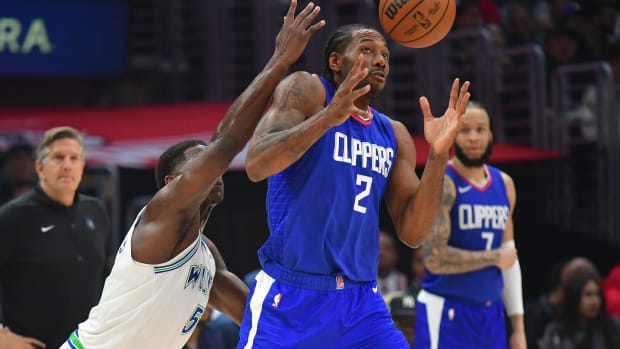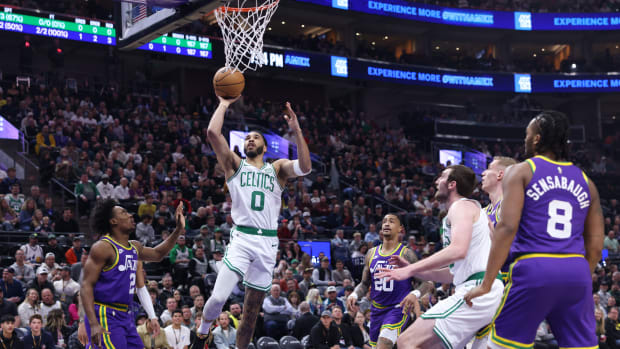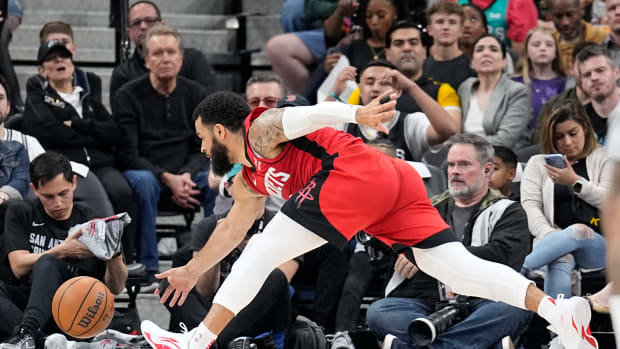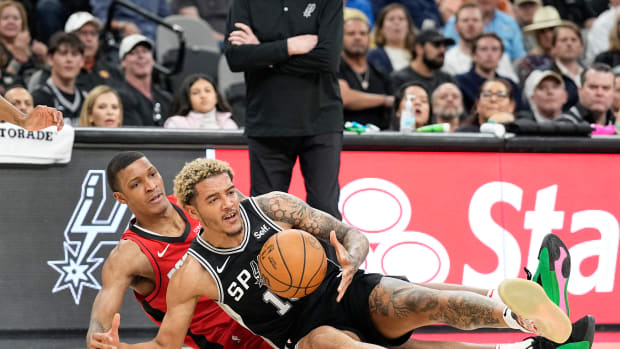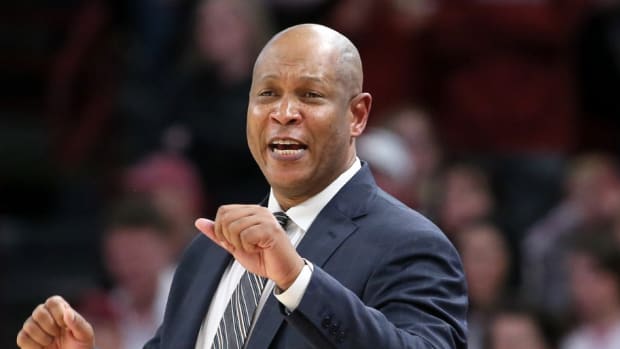The Bulls' Offseason Needs Are Abundantly Clear
Part of what was so captivating about the Celtics’ convincing first-round sweep of the Brooklyn Nets was the reality that, as of early February, Boston was in ninth place—far from a lock to even reach the playoffs.
Now, of course, the Celtics look like perhaps the hottest team in basketball, and the Eastern Conference favorites. But their ascent since the start of 2022 feels like the polar opposite of what happened with the Bulls, who saw their season come to an end Wednesday night.
Chicago, with one of the stranger seasons in recent memory, started out as one of the league’s biggest surprises, showcasing lockdown defense in the late stages of games to go along with a potent offense. The club sat in first place in the East for the majority of the season, remaining there past the All-Star break, as late as February 25th.
But by the end of the regular season, the Bulls tumbled all the way to sixth—the last spot while being able to avoid the play-in round—looking uncompetitive against the league’s best teams. They then landed a brutal playoff matchup with the defending champion Bucks, who dispatched them in just five games despite not having Khris Middleton.
So what went wrong for Chicago? And what comes next for the Bulls, who enjoyed their first trip to the playoffs since 2017, and will be looking to build on the step forward this offseason?
Any postmortem of this past season has to start with the obvious: Chicago’s season took a dramatic turn as it battled key injuries to Alex Caruso and Lonzo Ball. With just one of those players, and at times without both, the Bulls’ defense had no teeth, and no ballhawks to dig down and pressure post players to cause turnovers, which were a huge key for a team that thrived in transition when Ball was healthy. The club’s lack of depth was a question mark heading into the season, and it also turned out to be the Bulls’ undoing at the end of it.
Chicago got all it could have possibly asked for from DeMar DeRozan, who at 32 averaged a career-best 27.9 points on some of the best efficiency he’s ever shown. The biggest decision the team’s front office has this season is the one about his All-Star running mate, guard Zach LaVine, who will become an unrestricted free agent this offseason. The 27-year-old is eligible for a five-year, $200 million max contract.
“Max player, max talent, max everything,” DeRozan said on Wednesday when asked about LaVine after the team’s season-ending loss. “He’s one of those players in this league that you don’t see too often.”
Beyond LaVine, though, the Bulls have plenty of situations that need fixing. Perhaps the biggest is their starting big man, Nikola Vučević, who was initially brought in via trade last season to be a second star to LaVine, but often looked out of place this season as a third banana. While the two-time All-Star center is capable of spacing the floor and shot 40% from beyond the arc last year, he took an enormous tumble to just 31.4% this season. Similarly, his shooting percentage from the midrange portion of the floor, 39.7%, was the lowest it’s been since his rookie year, per Basketball-Reference. Those numbers helped justify the choice the Bucks made to ignore Vučević when he stood above the free-throw line in the series, instead opting to pack the paint against DeRozan and LaVine with two and three defenders.
“DeRozan is seeing this loaded up defense each time,” TNT analyst Stan Van Gundy said during the telecast Wednesday. “You can see what the Bucks have done with their roster—they knew that’s [the sort of defense] Giannis would face, so they eventually made it to where everyone on the floor around him could shoot.”
Depending on what level of faith the Bulls have in Vučević’s ability to bounce back, it would make a lot of sense for them to target an above-the-rim big who can space the floor vertically after screening for the All-Stars. Someone with a bit more athleticism defensively would help, too, and reduce the need for players like Ball and Caruso to do as much.
There figures to be plenty of leaguewide trade chatter surrounding stud defender Rudy Gobert if and when Utah gets knocked out. Someone like him would do wonders for the Bulls, but it’s unclear how Chicago could even make that work—Gobert is under contract at $38 million, $41 million, $44 million and $47 million over the next four seasons—especially if the Bulls are seeking to re-sign LaVine at big money, while DeRozan is already on the books. Someone like a JaVale McGee—a long, rim-protector who doubles as a lob threat—would be a good pickup, and a far more realistic one.
The other thing Chicago desperately needs is a big, credible wing or two that can at least pretend to obstruct a player like Giannis Antetokounmpo or Kevin Durant now and then. (Giannis averaged 28.6 points on 56.8% shooting in this series, while Durant averaged 31 points and 5.7 assists against Chicago, while shooting 53.3% overall, 44.4% from three, and 95.5% at the line.) Caruso was impressive and held his own at times against Antetokounmpo despite giving up seven inches. But a player with the size and skillset of Harrison Barnes—who isn’t a free agent until 2023—would prevent the Bulls from having to sell out the way they did so frequently against Milwaukee.
Unable to impede Antetokounmpo in single coverage, they had to use multiple players to wall him off from the painted area. In doing so, the Bucks—Grayson Allen in particular—caught absolute fire from three, getting one wide-open look from the arc after another. Allen hit 70% (14-for-20) of his tries from deep over the final three games of the series, which played a huge part in making up for the absence of Middleton.
And while Allen is loathed in Chicago—during the regular season, he committed the controversial flagrant foul on Caruso, which led to him fracturing his wrist—it’s a safe bet that the Bulls will be on the lookout for players with Allen’s skillset as a perimeter shooter.
In Game 5, the Bucks goaded Chicago into launching a season-high 52 triples; most of which were uncontested as Milwaukee smothered the driving DeRozan. Yet the Bulls made just 15 of them, or 28.6%. Coby White was just 4-for-13. Javonte Green shot 0-for-5. Troy Brown Jr. was just 2-for-9; Ayo Dosunmu finished 1-for-4, while Derrick Jones Jr. closed things out going 1-for-5.
To put that into perspective, Game 5 was actually an improvement from Game 4, in which the Bulls shot just 25% from deep, at 9-for-36. And just in case those two games don’t showcase enough of a pattern, in Game 3, they managed to shoot just 26.5%, at 9-for-34.
Beyond figuring out LaVine, Chicago’s offseason needs are abundantly clear. Now, it’s just a question of whether the Bulls can address them in a way that helps them take the next step.
More NBA Coverage:































